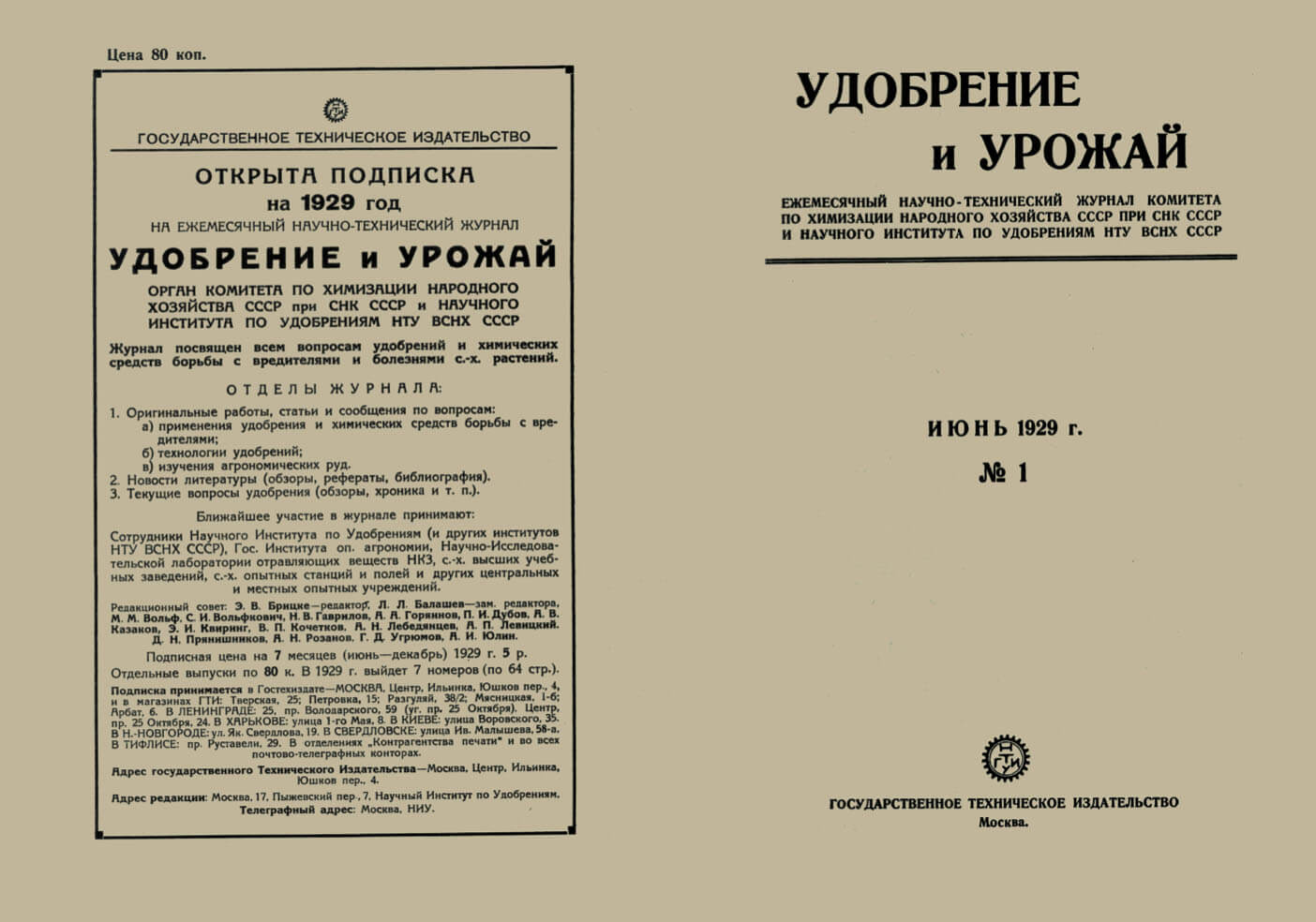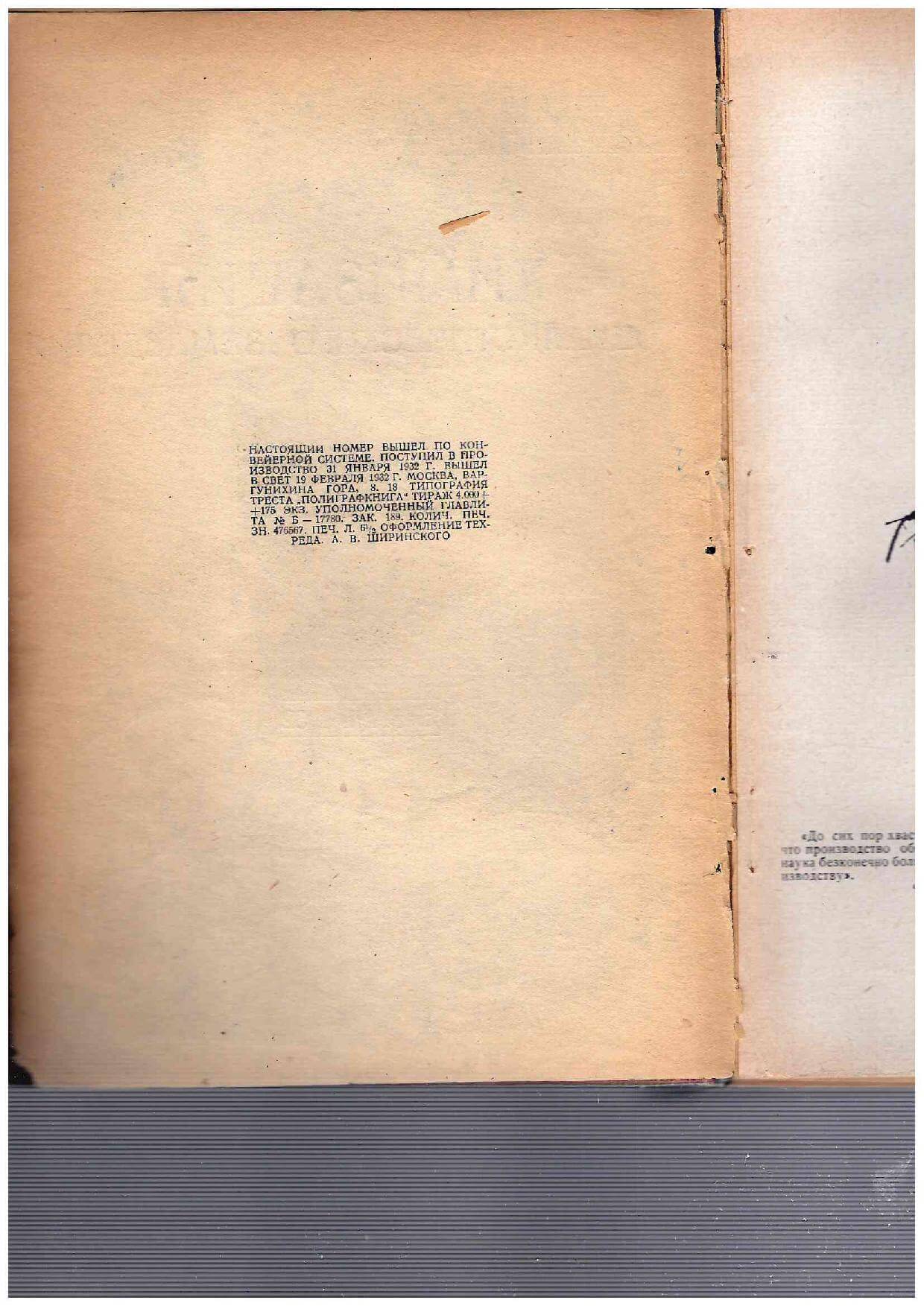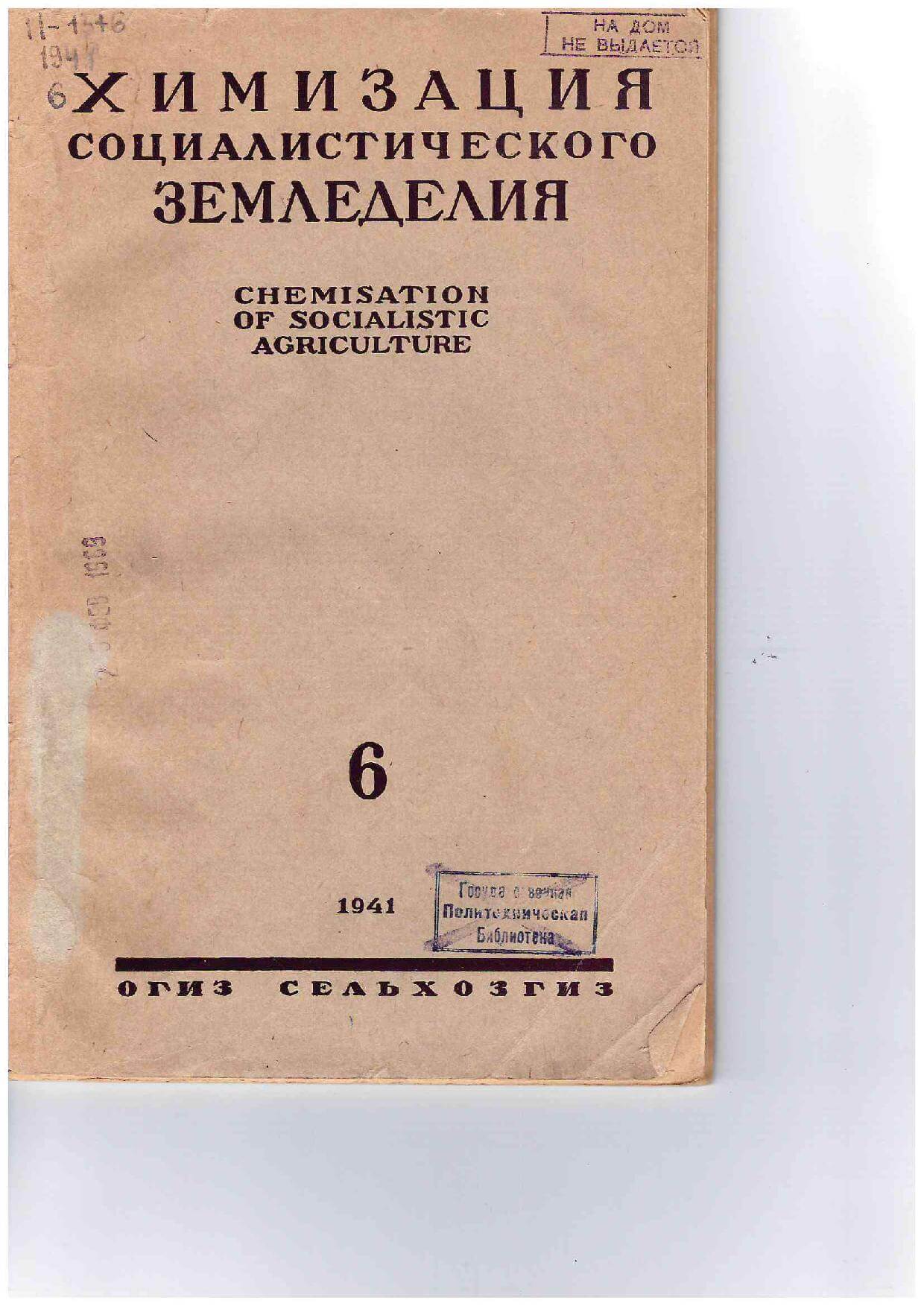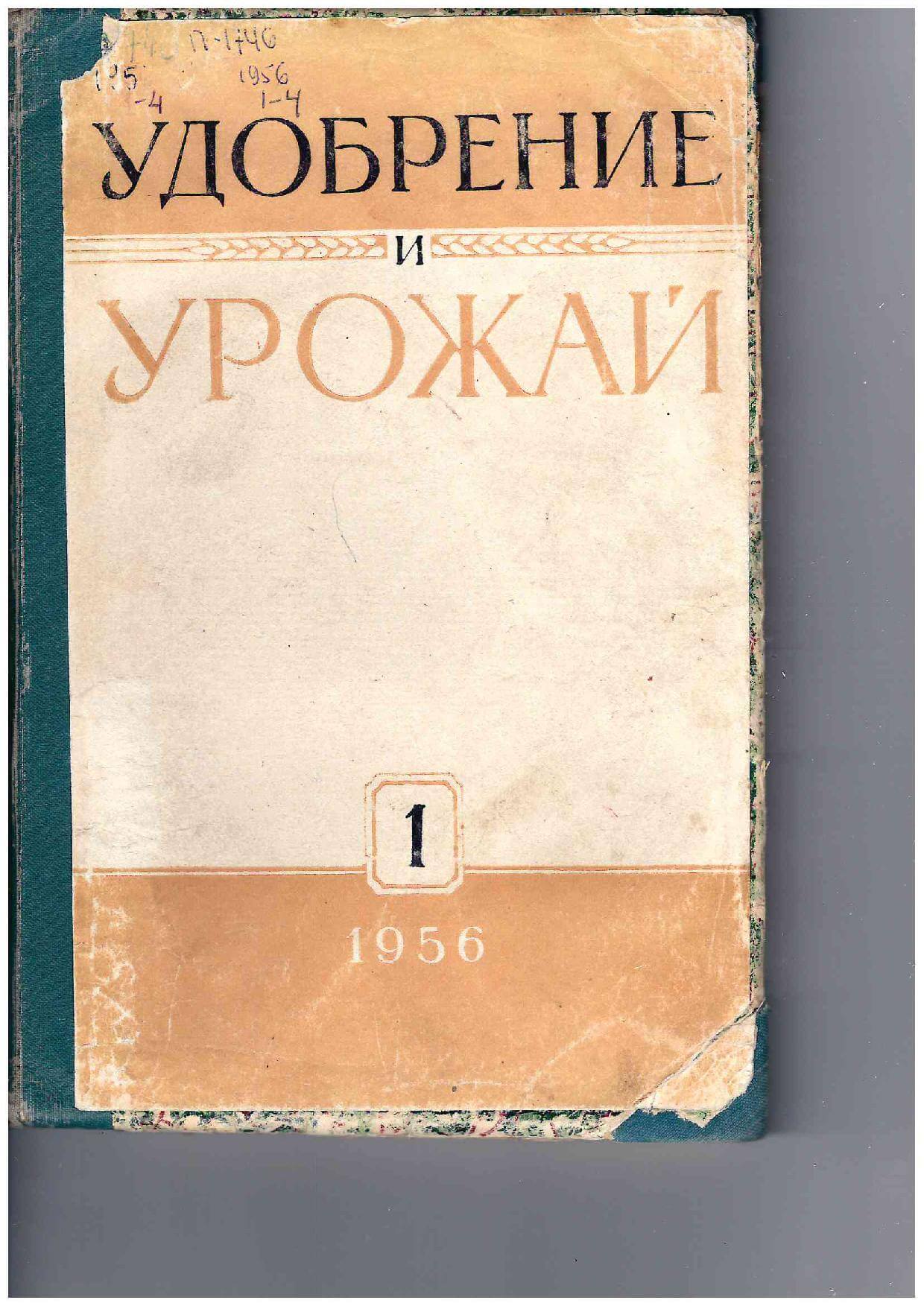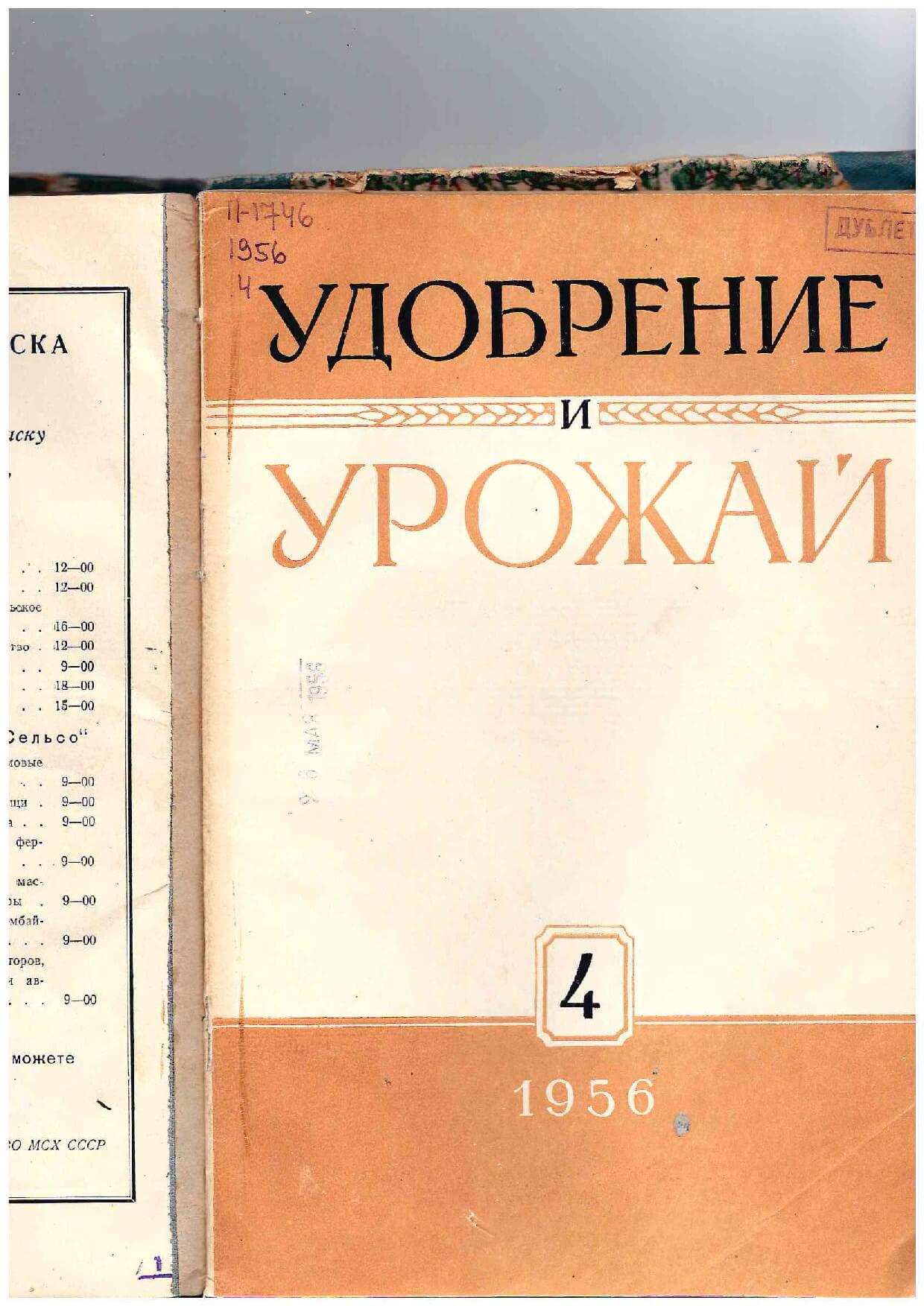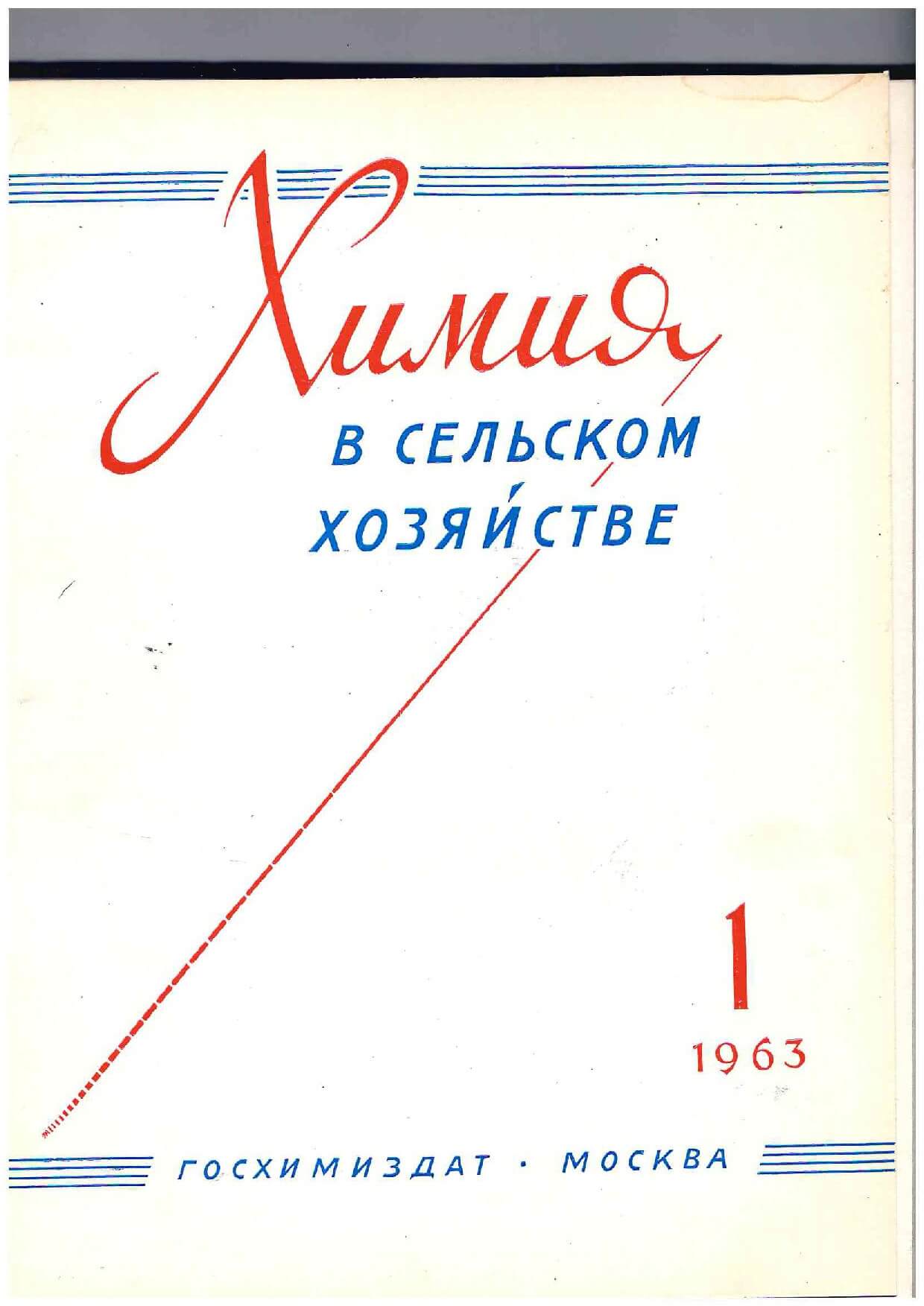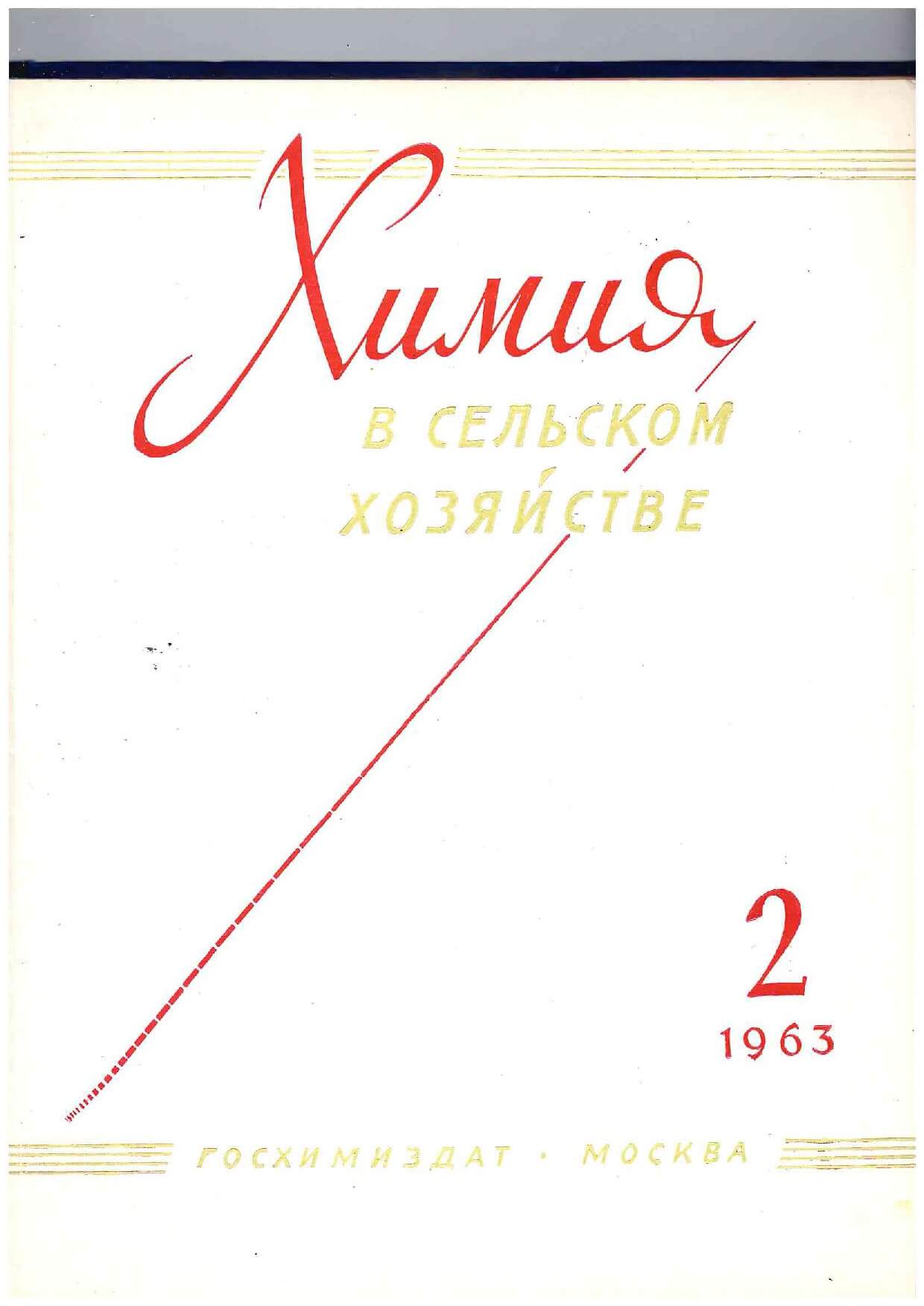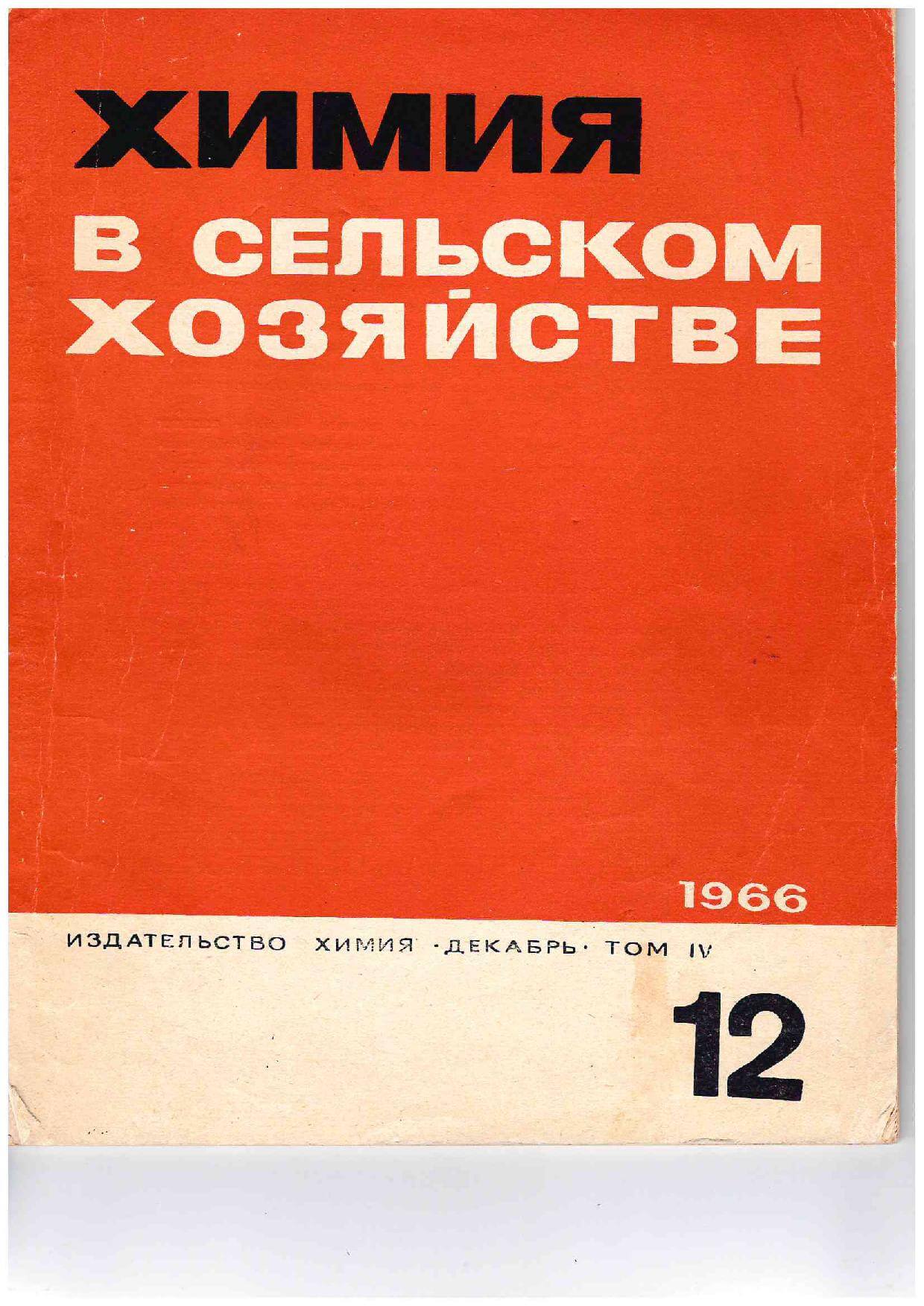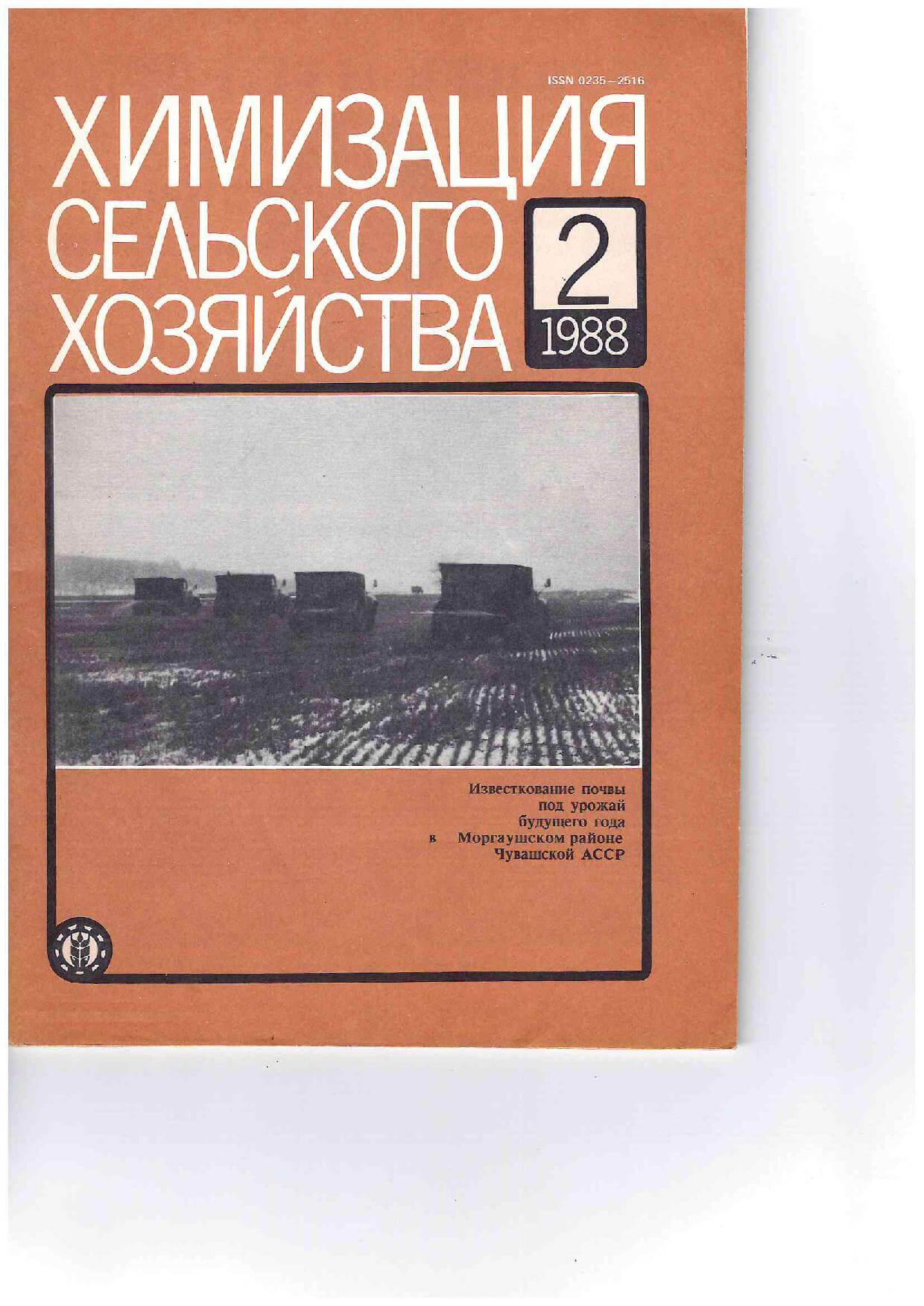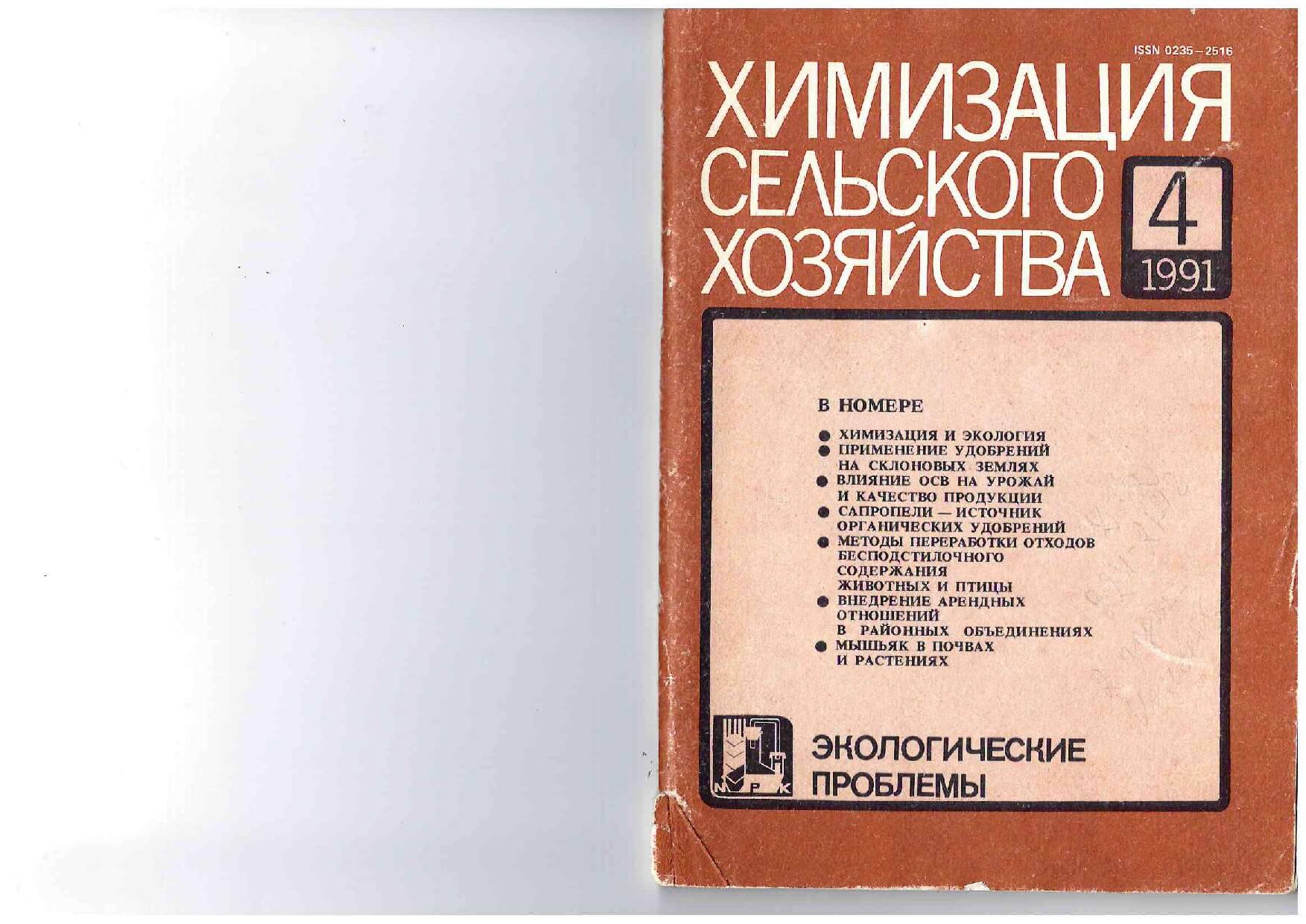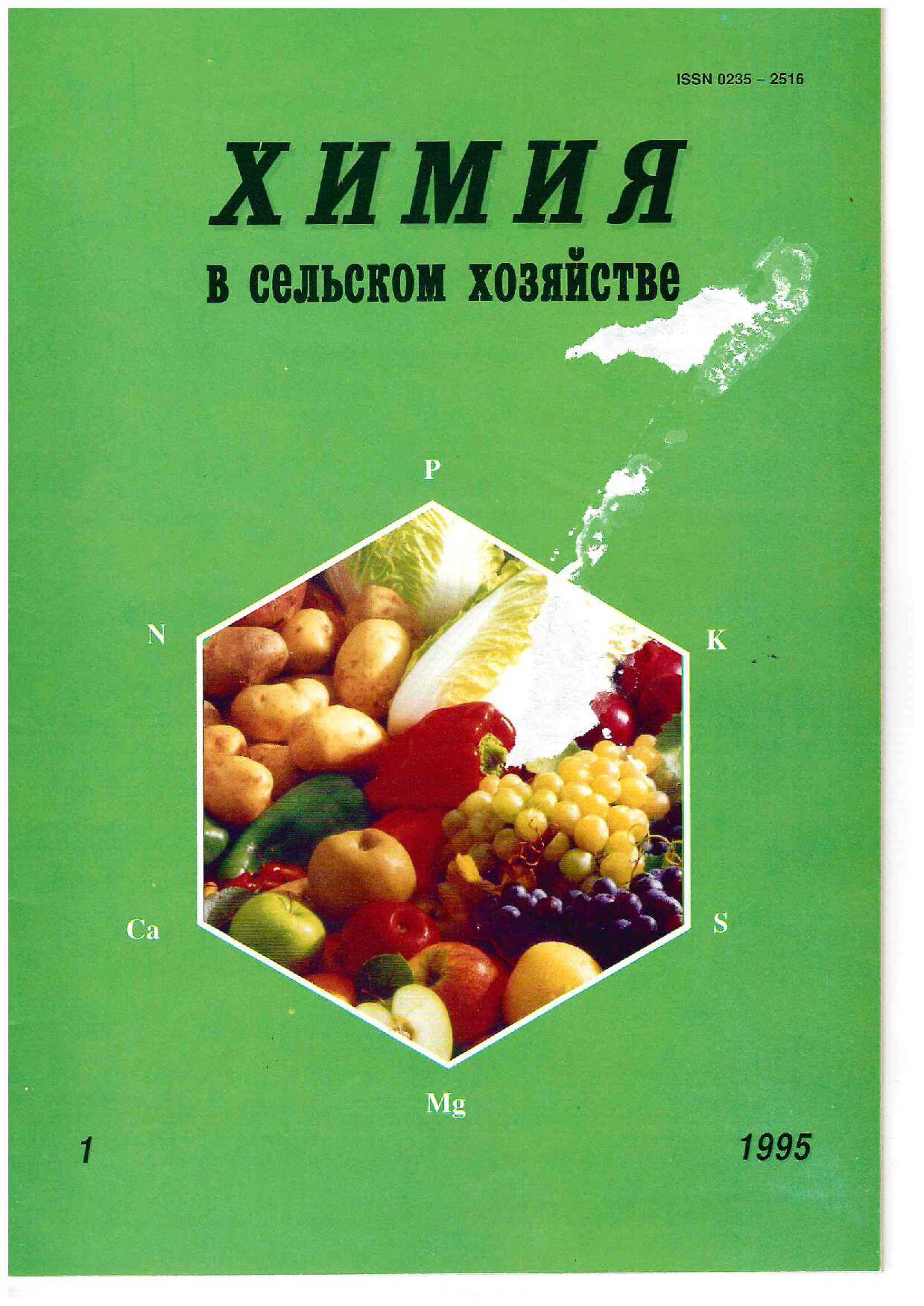95th anniversary!
Anniversary is a reason to think, look back and assess what has been done. Celebrating the 95th anniversary of the publication of the first issue of «Fertilizer and Harvest» («Udobrenie I Urozhai») journal, the successor of which is «Agrochemical Herald» journal, the editors summarize and look to the future.Back in 1929, the management and staff of the Scientific Institute for Fertilizers, which was located at the following address: 7, Pyzhevsky Pereulok, Moscow, 7, produced a monthly scientific and technical journal «Fertilizer and Harvest», the organ of the Committee on Chemicalization of National economy of the USSR with Soviet of Public Commissars of the USSR. The editorial board of the journal included: E.V. Britske – Editor, L.L. Balashev – deputy editor, M.M. Wolf, S.I. Wolfkovich, N.V. Gavrilov, A.A. Goryainov, P.I. Dubov, A.V. Kazakov, E.I. Kwiring, V.P. Kochetkov, A.N. Lebedyantsev, A.P. Levitsky, D.N. Pryanishnikov, A.N. Rozanov, G.D. Ugryumov, A.I. Yulin.
The journal was devoted to all issues of fertilizers and chemical means of controlling pests and diseases of agricultural crops, the study of agronomic ores, covered news of literature (reviews, abstracts, bibliography), as well as materials of scientific conferences and seminars.
In the introductory remarks from the editors, it is noted that «... the tasks of increasing the yield of agricultural crops and chemicalization of the national economy are largely carried out through the development of the tuk industry and the widespread use of mineral fertilizers. The interests of industry, agriculture and the defense of the country are harmoniously linked here». This is in perfect harmony with today's realities: food security is currently one of the main tasks of the state.
Looking through the first issue of the journal, the titles of the articles, as well as possible, speak about its topics:
«A united front for a rise in productivity» (P.I. Dubov); «On comparing the effects of manure and mineral fertilizers» (D.N. Pryanishnikov); «The effectiveness of soil liming of the podzolic strip» (A.P. Levitsky); «Phosphoritic background of the USSR» (A.V. Kazakov); «Testing of walking kits to determine the soil's need for lime» (N.P. Remezov) and others.
Under the heading «Abstracts» in the subsection «Agrochemical works and vegetation experiments» presents the results of the research D.N. Pryanishnikov, V.S. Ivanova, I.G. Dikusar, B.A. Golubeva, Z.I. Zhurbitsky and others.
The subsection «Field Experiments and the Use of Fertilizers» contains an analysis of works on field crop cultivation, fertilization of podzolic soils due to their acidity, the use of increasing doses of nitrogen by different varieties of winter rye, the use of defecation mud in the north of the beet zone, field experiments with flax, etc.
In 1932, in connection with the industrialization of the country and a large amount of scientific work, the journal received a new name – «Chemization of Socialistic Agriculture», and the journal «Protection of Socialist Harvest» appeared from the column «Plant Protection», the legal successor of which is «Protection and Quarantine plants» journal. Both publications were published until July 1941 and resumed their work only in 1956, when the journal was again published under the title «Fertilizer and Harvest».
In 1963, the State Committee of the Chemical and Petroleum Industry under the USSR State Planning Committee and the USSR Ministry of Agriculture began publishing a monthly journal «Chemistry in Agriculture», in the State Chemistry Committee.
In 1988, the journal was referred to the V/O «Agropromizdat» and was named «Chemicalization of Agriculture», and in 1992 the editorial office published a questionnaire in which it presented to readers several versions of the names: «Chemicalization of Agriculture», «Chemistry in Agriculture», «Fertilizer and Harvest», «Fertility and Harvest», «Fertile Niva». As a result of the survey, the majority of readers (50%) focused on the title «Chemistry in Agriculture», as it more fully meets the content and scope of the journal. The same decision was made by the founder, the Council of the «Rosselkhozkhimiya» association, and under this title the magazine began to be published in January 1993. Since then, the Ministry of Agriculture of the Russian Federation has also become the founder of the magazine. On the pages of the journal a significant place was given to the work of specialists of the centers and stations of the State Agrochemical Service, which was headed by the Main Department of Chemicalization and Plant Protection with the State Chemical Committee of the Russian Federation and which in 2019 celebrates its 55th anniversary.
With the transition to market relations, the volume of use of chemicalization tools has drastically reduced due to the exorbitant jump in the price of mineral fertilizers and the rubric «Unconventional Fertilizers and New Types of Organic Fertilizers» appeared in the magazine, which began in 1994, number 4, dedicated to the Third International Congress on the bioconversion of organic waste.
In 1996, the first issue was devoted to the 10th anniversary of the elimination of the consequences of the Chernobyl accident and the conduct of agricultural production in the conditions of radioactive contamination. This theme has also been developed in the number 3 for 2001, in which N.A. Korneev, Academician of the Russian Academy of Agricultural Sciences in his article «Radioactive pollution and agriculture» told the story of the beginning of work carried out since 1947 in the biophysical laboratory of the Timiryazev State Agrarian Academy, headed by V.M. Klechkovsky and which were continued in the Urals in the closed Experimental Research Station, located not far from the secret at the time of the Mayak chemical plant. At this enterprise and in the atomic industry accidents have repeatedly occurred. It was thanks to scientists that they managed to prevent serious consequences for the environment and the population, which, unfortunately, turned out to be experimental objects in the world race for the creation and testing of atomic weapons. This interesting article N.A. Korneeva was highly appreciated in the scientific world, and its author became the winner of the competition «Agrochemist of the Year – 2001», conducted by the editors of the journal. In 2006, it turned 20 years after the Chernobyl accident and number 2 was devoted to the effectiveness of agrochemical measures in the rehabilitation of radioactively contaminated areas. This number was awarded the Diploma of the «National Environmental Award» of the V.I. Vernadsky.
In 2010, the journal won the National Prize. P.A. Stolypin «Agrarian Elite of Russia» in the nomination «Promotion of new technologies and scientific advances in improving fertility and the revival of agricultural land».
Today, the journal has become an important link in solving the problems of the theory and practice of the use of chemicals for the restoration and preservation of soil fertility. It highlights the work of the State Agrochemical Service for the effective and environmentally friendly use of agrochemicals and their certification. On the pages of the journal, conceptual issues are proposed for the provision of new services for land users, scientists of research institutions, teachers and students of universities, as well as for specialists in environmental protection. For business people, information is published on the state of the market for chemical products, advertising of new chemicals and devices that can be used to monitor and make recommendations for environmentally friendly products. Since the editorial board accumulated a huge amount of material for solving environmental problems in agriculture, in 1998 the third issue was named «Agroecology: problems and solutions», then under this title the journal was published several times.
The editors pay great attention to the work of enterprises – fertilizer producers. For example, number 2 for 1995 and number 5 for 2000 are devoted to anniversaries of the potash industry. Number 4 for 2004 – union of producers and exporters of potassium and salt. In issue 3 in 2008, the work of the educational center of MCC «EuroChem», number 2 in 2007, NVP «Bashinkom», a manufacturer of biologics, is described. In 2018, a special issue was published, which was prepared based on the results of experiments on the application of innovative products based on humic acids from Leonardite from «Life Force».
The editorial staff assigns enormous importance to the promotion of the work of scientists from leading agricultural universities and research institutes. Their works are devoted to numbers associated with anniversary dates: № 1 – 2009 – the 80th anniversary of the Faculty of Soil Science, Agrochemistry and Ecology of the Russian Timiryazev State Agrarian University (RSAU – MTAA); № 5 – 2009 – Jubilee of the Agronomy Faculty of the Kazan State Agrarian University; № 2 – 2011 – Anniversary of the Department of Agrochemistry and Agroecology of the Nizhny Novgorod State Agricultural Academy; № 5 – 2011 – Jubilee of the Moscow Research and Engineering Institute «Nemchinovka»; № 4 – 2012 – To the 100th anniversary of the Voronezh State Agrarian University; № 4 – 2013 – On the 100th anniversary of the Institute of Organic Fertilizers and Peat; No. 1-6 – 2014 – To the 50th anniversary of the State Agrochemical Service; № 4 – 2015 – Anniversary of the Belarusian State Agricultural Academy; № 5 – 2015 – Our guest is Bryansk State Agrarian University; № 2 – 2016 – Chernobyl – 30 years; № 2 – 2017 – 100 years since the establishment of the Higher Agricultural Courses in the Nizhny Novgorod region; № 4 – 2017 – Anniversary of the Department of Soil Science, Stavropol State Agrarian University; № 2 – 2018 – 45 years of the Faculty of Soil Science of Moscow Lomonosov State University; № 4 – 2018 – Anniversary of the Department of Agrochemistry and Plant Physiology of the Stavropol State Agrarian University.
A special place in the pages of the magazine is devoted to promoting the activities of the state agrochemical service. Almost every room has a heading «Agrochemical Service», and some of the numbers were entirely devoted to the work of such centers as «Vladimirsky», «Moskovsky», «Kemerovsky», «Stavropolsky», «Tatarsky», «Belgorodsky».
Do not forget in the journal about future generations of agrochemists, soil scientists and agroecologists, for whom there is a heading «Young scientists research».
Since 200
5, the journal has been included in the Russian Science Citation Index (RISC) on the Russian Scientific Electronic Library website (www.elibrary.ru), and since 2015, the journal has been included in the database of Russian scientific journals Russian Science Citation Index on the Web of Science platform. The inclusion of the journal since 1963 in the international database of chemical scientific journals Chemical Abstracts (CAS (pt)) has been confirmed, and registration in the Research Bible international research database has been carried out. From 2018, articles published in the journal are assigned to a Digital Object Identifier (DOI) on the basis of the Russian State Library (www.cyberleninka.ru).p>In the past few years, due to the increasing requirements of the Higher Attestation Commission of the Russian Federation on scientific journals, the editors accept for publication more and more articles by foreign researchers, the overwhelming majority of whom are young scientists from the CIS countries. It should be noted that the members of the editorial board, carrying out scientific expertise of the submitted materials, evaluate these works as very, very mediocre. Many manuscripts of Russian scientists leave much to be desired, therefore it is necessary to note the enormous amount of work done by the editors and the editorial board of the journal to bring materials to the level of cited scientific articles. Only through well-coordinated work does the journal manage to occupy a worthy place in the Russian agrarian and environmental science.
Journal passed a difficult but glorious way. He witnessed many difficult stages in the life of the country and agrarian science.

















